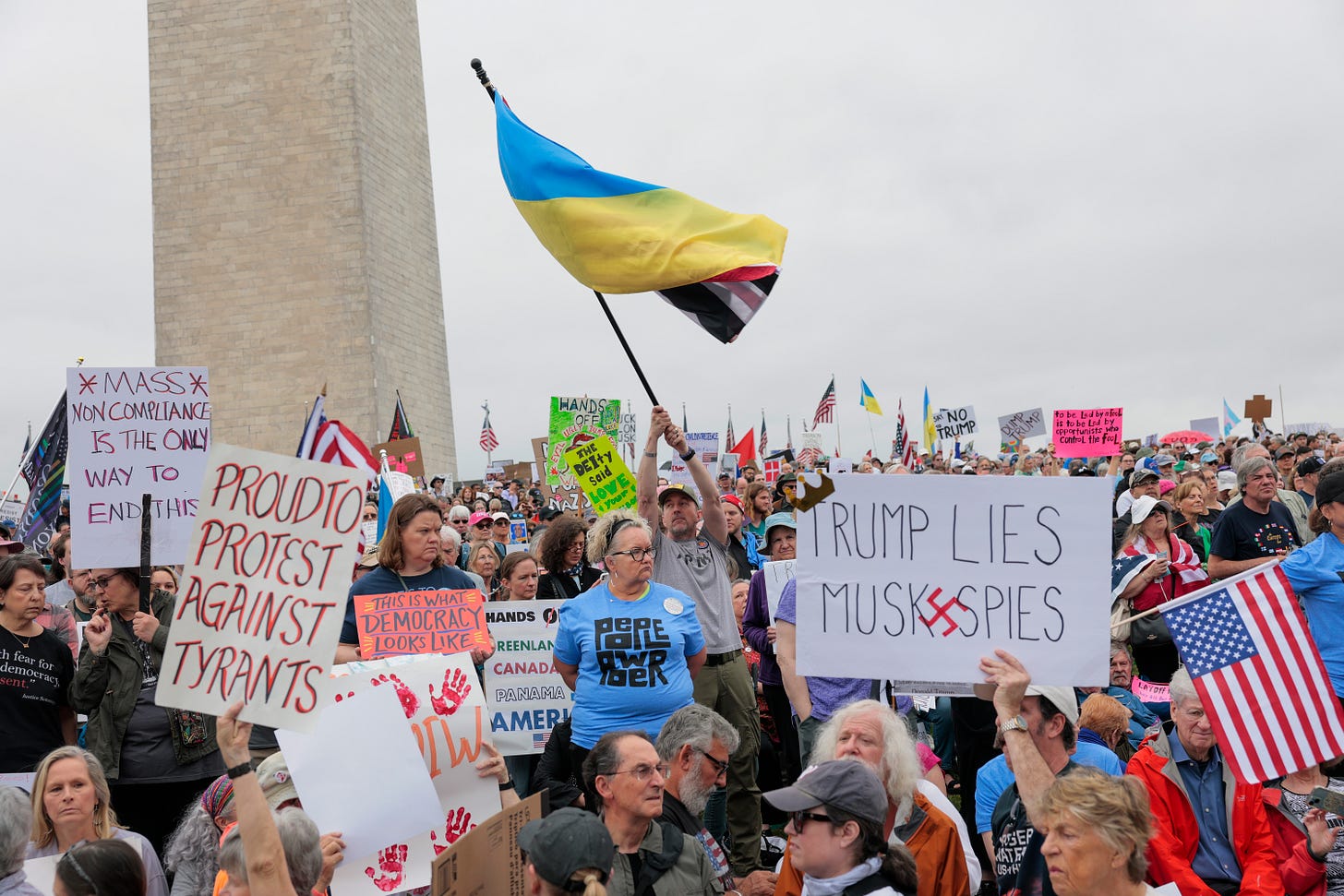
Every week since January 20, 2025 has felt like it’s been jam-packed with news, as Donald Trump and his team have acted on multiple fronts to seize unprecedented powers, attack the president’s myriad enemies, fundamentally shift the country’s geopolitical orientation, and establish a much harsher and more personalistic form of rule.
But with the “Liberation Day” announcement on last Wednesday afternoon, something shifted. Up until that point, the unfolding trajectory of the second Trump administration seemed pretty clear, despite how destabilizing it’s felt. The president wants to govern by decree and to establish the primacy of the executive branch in the federal government—and those authoritarian impulses have been aided by his relative popularity. Not only did he win an outright plurality of the vote last November, but his aggregate approval rating remained in the respectable 47 to 48 percent range through weeks of extraordinary activity and turbulence radiating from the White House. That seemed to indicate broad-based tolerance for or deference toward Trump’s alarming actions that has been reflected in the nearly nonexistent opposition the president has faced from Republicans in Congress.
But the enormous scale of the so-called reciprocal tariffs Trump announced on Wednesday, far surpassing what even the most protectionist-oriented members of the administration had been advocating, signal the start of a new phase of the Trump presidency. In addition to convulsing markets around the world, the Trump tariffs directly caused a stock-market crash in the United States, with trillions of dollars incinerated in the two days following the tariff announcement. Most analysts now think a recession, possibly a deep and painful one, is more likely than not.
At the moment, the MAGA faction of the GOP is dominant in the party and maximally inclined to stick by Trump’s side no matter what happens. But it’s unclear whether that will persist through painful job losses, a sharp decline in the value of retirement accounts, and other signs of economic contraction. Even if it does, the coalition that elected Trump the second time included many people who can hardly be described as MAGA. They’re transactional Trump voters, both Republicans and independents, willing to vote for him in the hope of returning to the economic boom that coincided with the first three years of his first presidency (prior to the massive exogenous shock of the COVID-19 pandemic), but also ready and willing to walk away from him at the first sign of economic trouble.
We’re already seeing a tentative negative turn in the polling that is highly likely to worsen as the American economy responds further to the massive exogenous shock delivered by Trump’s own trade policies. That means we’re facing a very different reality than the one we seemed to be confronting as recently as a week ago. Before long we may be a country with a president actively seeking to govern as an authoritarian while his own popular support is declining. That points to two possible paths forward, one better than what seemed likely prior to “Liberation Day,” and the other notably worse.
The Optimistic Scenario
Keep reading with a 7-day free trial
Subscribe to Notes from the Middleground to keep reading this post and get 7 days of free access to the full post archives.




